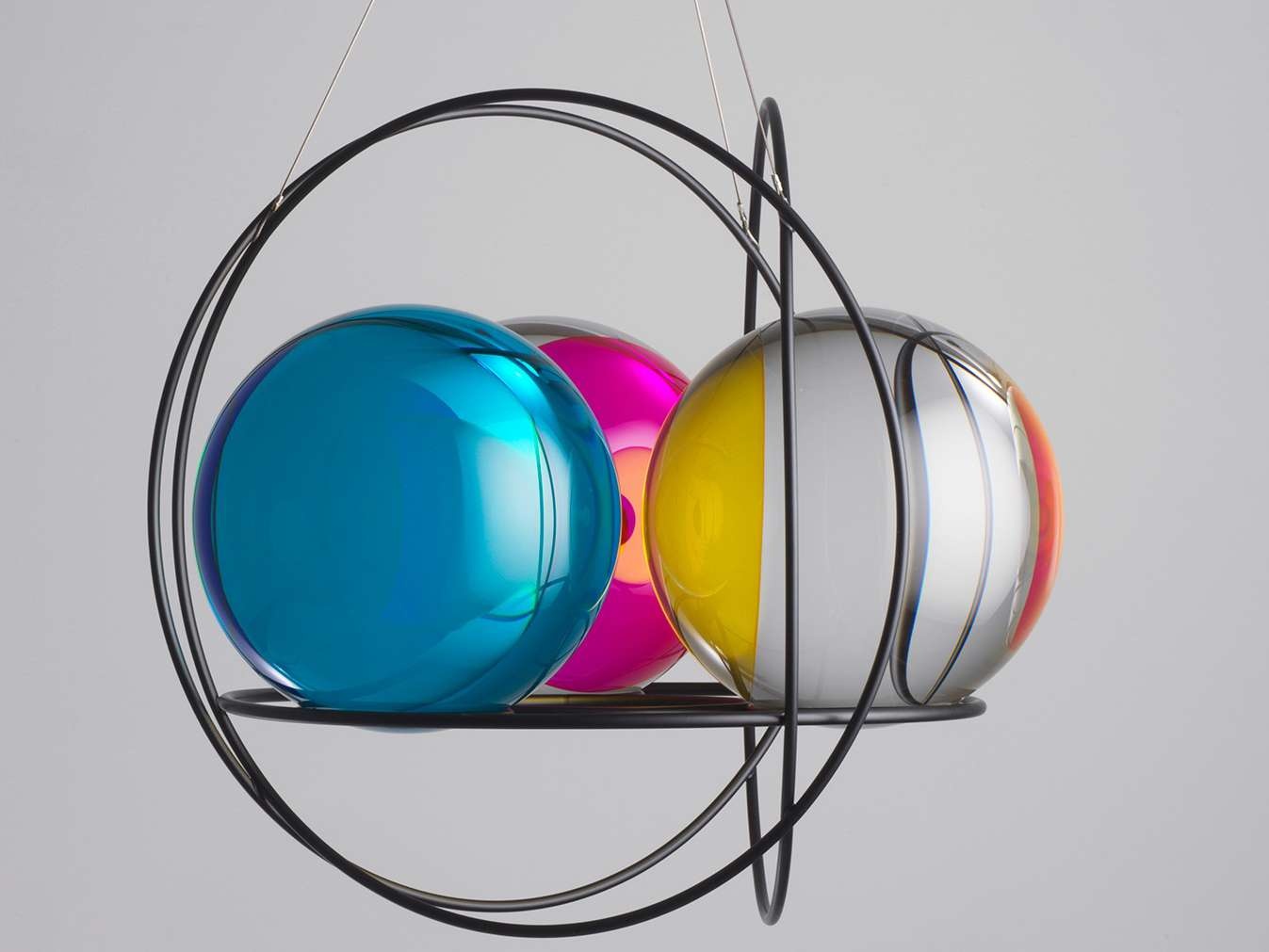Olafur Eliasson

Reimagining reflection as a sculptural mechanism, Eliasson expands visual space, pairing the real world with its mirror image. He applies refraction to great effect, bending and reflecting light to make apparent its physical qualities. In Analogue accelerator, mirrors magnify light’s primary colours – cyan, magenta, and yellow – in a composition comprising three glass spheres balanced on circular metal structures. The work optically mixes these colours as it turns, filling each glass sphere with changing tones. Rotating on a single axis, the sculpture gives to light and colour a form, expressing with elegant minimalism the intangible nature of the visible.
b.1967, Copenhagen
Olafur Eliasson is at once an artist, ecologist, architect, inventor and splitter of light. Among his more ambitious gestures, he has made rainbows appear in galleries, turned rivers green, built waterfalls in Manhattan, set glaciers melting in public squares, and conjured the sun in the Tate Modern’s Turbine Hall. Immersive and experiential, Eliasson’s many projects offer an embodied engagement with the natural world. While his preoccupations are primarily environmental, they extend to include more abstract pursuits, such as colour theory, complex geometry, and motion patterns. Engaged with the mechanics of perception, Eliasson explores how and why we see things, rather than what we see. As such, many of his smaller, more discrete works appear as optical experiments; the ordinary qualities of light lent a sculptural expression. In making visible the physics of perception, Eliasson inspires a pre-intellectual wonder in the visual world, whether it be in the simplest refraction of light or the interplay of colours. The artist, curator Laurence Dreyfus writes, “confronts the finitude of the human being with the idea of a vast, expansive universe,” and, in doing so, invites us to see with new attention those phenomena which describe our visual world.